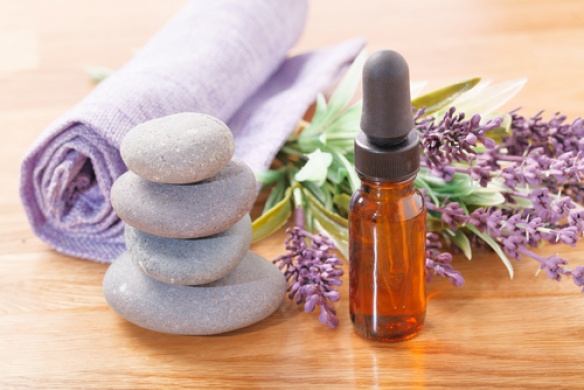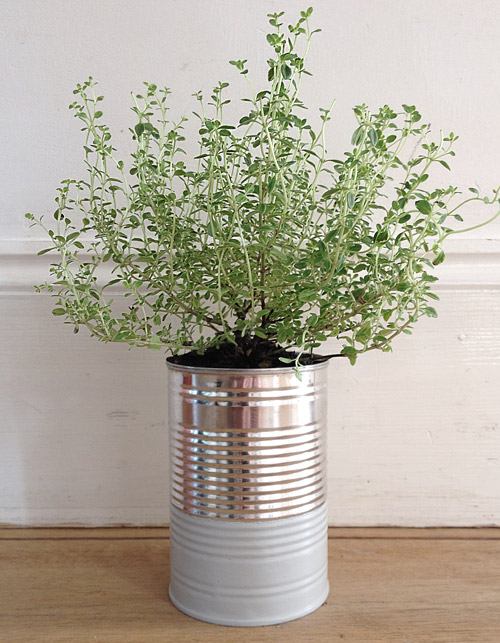Thyme is effective in cosmetology thanks to its chemical composition , which includes apple and acetic acids, tannins, anti-inflammatory substances, natural antibiotics, and vitamins.
The high content of thymol, a powerful antimicrobial agent, effectively combats problems of oily skin that is prone to acne and inflammation. Thyme is as effective for the skin as oregano.
Thyme for the Face
Acne Mask with Thyme
Egg white, 2 teaspoons of crushed aloe or store-bought aloe gel, a teaspoon of crushed thyme or 3 drops of thyme essential oil. Mix the ingredients well and apply to the skin, rinse off with cool water after 15 minutes.
Cosmetic Ice with Thyme
Pour a heaping tablespoon of thyme with 1.5 cups of boiling water and let it steep. While the thyme steeps, you can do a steam facial cleansing over the infusion for 10 minutes. After steaming, ideally, wipe your face with ice to tighten the pores and push out any impurities. Make sure to use thyme ice in the morning for contrasting washing—your skin will thank you.
Thyme Cream
I suggest two cream recipes:
- For Oily Skin. In a glass jar, melt 30 grams of butter in a water bath, add a tablespoon of dried or fresh (well-chopped) thyme, and let it simmer in the bath for 20 minutes. Add a tablespoon of beeswax melted in a spoon, mix everything thoroughly, allow to cool, and store in the refrigerator. This cream is best used in the evening on well-cleansed skin, an hour before bedtime—any residue that isn’t absorbed should be gently wiped off with a napkin before you go to sleep. Remember, oily skin doesn’t need to be dried out with alcohol-based lotions and harsh scrubs. If oily skin receives proper nourishment, excessive greasiness (a protective reaction to aggressive cleansing) will definitely disappear. Don’t be afraid to use creams based on natural fats.
- For Dry Skin. This is a cream option with an olive oil base. Finely chop a tablespoon of fresh or dried thyme and place it at the bottom of a glass jar, then pour in 100 grams of first-pressed olive oil (preferably). Let it steep for a day, then place the mixture in a water bath for 2 hours. This way, we obtain thyme oil. Next, strain it through cheesecloth into a glass container for storage (ideal are spice jars with a wide mouth and short height), and put it back in the water bath. Separately, melt a tablespoon of beeswax and add it to the jar with thyme oil, then remove from heat. After an hour, the cream will be ready for use. This cream can be stored for up to six months without losing its properties.
Your creams, lotions, tonics, and masks can be made more fragrant and beneficial by adding [thyme essential oil](/en/green-pharmacy/thyme-essential-oil/ “Эфирное масло чабреца (тимьяна “Thyme Essential Oil”).
Thyme for Feet
The medicinal properties of thyme are effective for foot care, especially for the prevention and treatment of fungal infections and unpleasant odors. The simplest way to care for your feet is to enrich any foot cream with thyme essential oil—after a shower, rub your usual foot care product into your feet, adding 2 drops of thyme oil.
Make hot foot baths with a tablespoon of thyme and 2 bay leaves. There’s no need to rinse your feet after the bath; let the infusion absorb. This bath helps prevent fungus, relieves itching, deodorizes, and softens the skin of the feet.
Thyme for Hair
Mix a paste made from 2 tablespoons of thyme with one egg and massage the clean scalp with this mask. Put on a warming cap and rinse off after an hour. This mask is suitable for thin, oily hair and for treating dandruff. If you have dry seborrhea and dull, dry hair that is damaged from perming or frequent coloring, add a tablespoon of honey to the mixture. Be prepared for the mask to drip. I recommend wrapping your head in cling film and then in an old towel.
I grow thyme at home on my windowsill all year round, so I have plenty of raw material for homemade cosmetics. Try growing thyme yourself!




